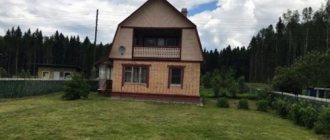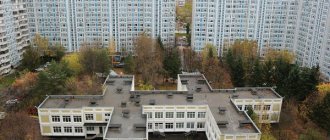The concept of individual heating
Before discussing the advantages of equipment for heating an apartment, you need to find out what autonomous heating of an apartment building is.
This is a special heating scheme for housing, which consists of installing a gas or electric boiler and new engineering systems in a separate apartment instead of old radiators and general heating pipes, which must be dismantled. The newly installed system circulates water, the temperature of which can be increased or decreased depending on the wishes and needs of the resident. Thanks to this, it is easy to establish optimal temperature conditions in the room. This is the simplest explanation for those who do not understand what autonomous heating in an apartment means.
The main difficulties in installing such equipment are due to the fact that the apartment building is already equipped with a common heating system, the owners of which are all apartment owners. Installing individual equipment means making changes to the following:
- belongs to many at the same time;
- is part of a huge utility system owned by large utilities.
To remove even a small part of it and implement changes, which include the individual heating system, you need to do a large amount of engineering work:
- Develop a project.
- Select equipment wisely.
- Install the new system in such a way as not to affect the interests of other residents and not create an emergency situation in the house.
Therefore, the first step is to obtain consent to such changes not only from public utilities, but also from all residents of the apartment building.
How to calculate the cost of individual heating
As mentioned above, not everything depends only on the cost of the material; you will also have to spend money on paperwork. Still, most of the costs are work and the purchase of equipment. Typically, the most expensive part of the system is the boiler. Gas units are noticeably cheaper than electric ones, but it is unlikely that you will be able to purchase a boiler for less than 10,000 rubles. In addition, the larger the area of your apartment, the more powerful the device is needed, and the more expensive it will cost. If we talk about safe and durable foreign equipment, then it will cost many times more than domestic equipment.
We recommend: What is better, autonomous or individual heating?
In second place in cost are heating radiators, which you will most likely also have to buy new. However, if the house and batteries are new, then the current system can be left, including only a gas or electric boiler. The most popular bimetallic batteries now will cost you an average of 400 rubles per section. Ideally, it is believed that one section should be enough for two square meters of space. But this is if your house has thick walls and there is no draft from the windows. In any case, it is better to take it with a reserve than to redo it later.
How to calculate the cost of individual heating?
To arrange heating, you will also need heating system pipes. Here the choice is great: you can leave metal, you can use inexpensive, reliable and durable polypropylene pipes. You will also need various shut-off devices, taps to regulate the flow of coolant and other devices to control the temperature in the room.
Of course, prices in each region for certain components differ, and therefore it is difficult to say exactly how much autonomous heating will cost; it all depends on the specific situation. For example, in Moscow, switching to individual heating will cost approximately 100-140 thousand rubles. The amount only looks impressive, but then how much can be saved on heat consumption.
YouTube responded with an error: The request cannot be completed because you have exceeded your quota.
- Related Posts
- Advantages of autonomous gas heating
- Types of autonomous heating of industrial premises
- How to make autonomous heating in a private house?
- How to make autonomous heating for a garage?
- What is better, autonomous or individual heating?
- Is it possible to install autonomous heating in an apartment building?
Advantages and disadvantages of autonomous heating
Individual heating in an apartment building has both advantages and disadvantages. The main advantage of such a system is its controllability by the consumer:
- Independent choice of temperature in the apartment. When it gets cold outside, you can increase the temperature, and if it’s warm outside, lower the temperature or turn off the boiler altogether.
- Saving resources and reducing payments. To heat an apartment, gas or electricity is used in much smaller volumes than in boiler rooms. In addition, with general house heating, some utility companies, even in warm weather in the spring, heat their houses to the maximum in order to increase the amounts in payments. Apartment heating eliminates this possibility.
- The ability to start the system and properly warm up the room if the summer was unusually rainy and cold.
It must be remembered that the ability to choose the temperature yourself depends on the serviceability of the utility network, which is the other side of the coin.
So, individual heating, like any phenomenon, has both pros and cons. The latter include dependence on the serviceability of pipes and other engineering structures.
The main difficulty, which not many people manage to overcome, is the bureaucratization of the process, as well as its high cost. It is often not possible to go through all the stages of coordination, design and obtaining permits, so some people give up halfway.
Types of decentralized heat supply
Of course, building a separate boiler room, even a small one, is quite expensive. And the attic option is also not cheap. However, there is an alternative.
Modular boiler rooms
Block-modular boiler room
One of the very interesting projects is modular, or block, boiler rooms. There is no need to build anything, and only a small area is allocated for the boiler house. Blocks are brought here, which are easily and quickly connected into a finished structure
All of them are completed at the factory, the equipment inside them is precisely selected according to technical parameters, they are insulated and have a presentable appearance
The most important thing is to correctly configure and connect the equipment. A couple of days and the boiler room is ready
But only specialists should assemble it. If anyone remembers, such modular boiler houses were used to heat cabins and barracks, that is, temporary structures. After engineers and designers worked on them, such autonomous installations began to be used to organize heating in apartment buildings. However, this option is not the only one.
Wall boilers
The most effective and economical solution today is apartment heating, where wall-mounted boilers are used as a heating device. They run on either gas or electricity. Why wall-mounted?
Wall boiler
- Firstly, they are small in size, so they can be installed even in kitchens. At the same time, their appearance does not spoil the interior design at all.
- Secondly, wall-mounted heating boilers are real mini-boiler rooms. Their design includes a circulation pump, an expansion tank, as well as control and safety devices.
- Thirdly, such heating installations can have a power of up to 35 kilowatts, which allows them to heat rooms up to 100 square meters.
- Fourthly, modern manufacturers offer both single-circuit and double-circuit boilers for autonomous heating. So you will also be provided with hot water.
And now the important question is how to choose the right boiler? The main thing is to correctly select the unit according to its design features. It should contain all the devices we mentioned without exception - pump, tank, etc. In addition, it is necessary to have a chimney, which will ensure not only the removal of fuel combustion products in the case of gas boilers, but also the flow of clean air from the outside. This means that a wall-mounted gas boiler must have a closed combustion chamber. And the last thing is full automation, which will not only simplify the operation of the boiler, but will also save on fuel.
Of course, with gas boilers there are more problems when connecting. But electric analogues are simpler in this regard. Here you only need to draw a branch from the distribution panel with the installation of the machine and connect to the water supply system.
What might cause difficulties?
Modern kitchen
It may seem that everything is very simple and profitable. Then why don’t tenants switch to this heating system? And no one gives them permission. Imagine that the residents of one house will immediately submit documents for the re-equipment of heating networks, or rather, to refuse the services of organizations that supply heat to their houses. This is, firstly, a disaster for such an organization and deprivation of its profits. And, secondly, job cuts, although this issue is controversial. Someone needs to maintain autonomous mini-boiler rooms. So, in many respects, any of these options is not profitable for management companies. Although on a national scale, it’s the other way around. But it’s not for you and me to decide this issue.
USEFUL INFORMATION: Power of attorney to renounce inheritance - how to write correctly, reasons
Legal regulation
First, you should find out what the law says about whether it is possible to install individual heating in an apartment. The legal acts regulating this issue include:
- . It determines the standards for the reconstruction of premises, the necessary documents, and general issues of housing refurbishment.
- . In Art. 14 mentioned:
- the need to connect to the heat supply system and conclude an agreement;
- cases of impossibility of connection to a common heating system;
- general requirements for how an alternative to central heating is connected in an apartment.
- . This document explains in detail how to determine the technical feasibility of connecting an object, how it is carried out, how project documentation is drawn up, and so on.
When discussing what the legislation requires in 2021, it is impossible not to mention.
This document lists the criteria for choosing a heat supply organization, the method of submitting documents and concluding an agreement with it. And most importantly, it contains a list of energy sources (boilers) that cannot be used for autonomous heating. Other types of equipment not included in this list are allowed for use.
Individual heating of an apartment: what is it, why and what for
Most often, people decide to abandon general heating due to the fact that:
- they are not satisfied with the quality of heating - lack of heat, discomfort in the cold season
- they want to regulate the level and timing of heat supply to the apartment themselves
- they want to reduce heating bills
In many new buildings, all apartments are initially equipped with an individual heating system, but residents of the old building should not be upset - it is quite possible to switch the apartment to individual heating. To do this, you will have to dismantle the old pipes and radiators, install new ones and connect them to the boiler-heater. The latter will heat the water and drive it through all the pipes, thereby heating the apartment. Hot water can also be connected to this boiler.
By installing his own heating system, the owner of the apartment will get rid of a lot of problems: he will no longer be afraid of planned and unscheduled shutdowns of heat and hot water supply, he will not freeze in severe cold and languish from the heat in the spring, when the sun is already blazing with might and main, but utility services are in no hurry turn off the heat supply. In general, there are a lot of advantages, but there are also quite a few problems. Before you acquire your own heating system, you will have to resolve a lot of issues, both technical and documentary. Let's deal with the technical side first.
Gas or electricity
When planning your own heating system, you need to choose what to heat with - gas or electricity. It is necessary to immediately make a reservation that we are talking about the system of the boiler itself, since the apartment is heated in any case by the liquid circulating through the pipes, but the boiler that heats it can run on both gas and electricity.
There is no doubt that gas boilers are the most popular. Their undeniable advantages are as follows:
- financial savings: gas is the cheapest type of fuel
- can be wall-mounted or floor-mounted - both are quite compact
- independence from electricity - in the event of a power outage, the apartment will not be left without heat and hot water
- greater efficiency - one boiler perfectly heats even the largest apartment
Transferring apartment buildings to individual heating Both the choice and installation of a gas boiler must be approached with all responsibility - after all, gas is not a joke, problems can lead to very sad consequences.
Therefore, it is best to contact specialists who will install all equipment correctly and safely.
There are apartment buildings that are completely devoid of gas supply.
In such apartments, only an electric boiler is possible, which also has its advantages:
- affordable price of the boiler itself
- high security
- ease of maintenance
- environmental friendliness, absence of any foreign odors and noises
But, of course, the cost of electricity when installing such a boiler will increase many times over. In addition, the apartment must have modern and powerful wiring that can withstand a sufficiently high voltage. In the event of a power outage, owners of such a heating system risk finding themselves without light and without heat.
Two circuits or one
Boilers are divided into single-circuit and double-circuit depending on the method of heating hot water. Single-circuit boilers are intended exclusively for heating an apartment; they will not provide hot water supply. True, you can connect an external boiler to them, which can heat water for the bathroom and kitchen.
A double-circuit boiler simultaneously heats the apartment and heats the water. This happens thanks to a special built-in heat exchanger - it is responsible for heating the water. Moreover, modern devices can have either one or two heat exchangers built in. In the first case, when cold water is heated, the heating supply is shut off. This is not very convenient, especially in winter. Two heat exchangers operate independently of each other, the water is heated without shutting off the heating, which allows you to constantly maintain the required air temperature in the room.
Documentation of an autonomous heating system
In order to obtain permission for individual heating in an apartment, you need to collect the documents listed in Art. 26 of the Housing Code of the Russian Federation:
- An application indicating the address of the apartment in which the redevelopment will be carried out, the signatures of all interested parties, the planned scope of work and other parameters.
- Title documents for housing: sales and purchase agreements, rental agreements, certificate of ownership.
- Residential renovation project.
- Technical passport of the premises.
- Consent of family members, where they will indicate whether it is possible to install autonomous heating in the apartment.
- Conclusion of the authority for the protection of architectural monuments on the admissibility of redevelopment if the house is a protected cultural object.
You need to submit documents to the local administration or the MFC.
Often these authorities refuse to register redevelopment, citing the project’s non-compliance with the law or incomplete information in the documents. However, you need to understand that the reason for the refusal is that:
- None of the officials will take responsibility for authorizing the redevelopment, because mistakes made can lead to the disrepair of the apartment building.
- It is extremely unprofitable for utility authorities to allow the transition to autonomous heating, since this will lead to a reduction in payments.
In this case, you will have to defend your rights in court.
general information
You should prepare for the fact that the heating supply organization will be against installing autonomous heating, because Almost throughout the entire territory of Russia, it is prohibited to disconnect an individual apartment from the central heating supply and switch it to an autonomous one (an exception is if the transition is carried out by the entire house). There are quite understandable reasons for this, such as:
- An installed individual boiler can unbalance the entire heating system of an apartment building, which will “suffer” neighboring apartments;
- The hydraulics of the system will be disrupted;
- Often, to install autonomous heating in a separate apartment, it is necessary to increase the diameter of the gas supply pipes, because otherwise, the pressure in the system may drop, which in turn will lead to malfunctions of gas stoves;
- There is no guarantee that the apartment owner will comply with all necessary security requirements;
USEFUL INFORMATION: Clinical examination after 40 in 2021
Also, before installation, you should pay attention to the presence of a chimney system in the house, which is mainly present in old houses. Unfortunately, in modern houses ventilation is provided only in the bathroom, toilet and kitchen
Important! It should be remembered that if you managed to install autonomous heating, you must periodically clean the chimney, which becomes clogged with soot, which negatively affects the efficiency of the gas boiler
Important! It should be remembered that if you managed to install autonomous heating, you must periodically clean the chimney, which becomes clogged with soot, which negatively affects the efficiency of the gas boiler
Gas wall-mounted boiler Bosch Gaz 4000W. ZWA24-2A23 S5700
How much does it cost to connect?
How much individual heating in an apartment costs is one of the main aspects of the coming changes. In all likelihood, this is what you should start from, because if the tenant does not have a significant amount, you should not even begin such a complex procedure.
There are three main stages of spending:
- Development of a redevelopment project, which includes payment for consultations, certificates from the BTI, legalization, and so on. At this stage, the tenant will spend from 50,000 rubles.
- Purchase of necessary equipment: boiler, pipes, box and combs, valves and other things. Their cost depends on the power of the equipment, material, diameter and length of the pipes. One boiler costs 20,000–60,000 rubles.
- Installation of equipment. The cost of installation will be 30,000–60,000 rubles.
During the redevelopment process, additional expenses will certainly arise, and the final cost will reach 150,000–180,000 rubles.
Autonomous heating in an apartment building
Is it possible to install autonomous heating in an apartment with your own hands? Although there is no legal ban on autonomous heating, it is still advisable to consult a lawyer, since some heating systems are prohibited. For example, water heated floors cannot be installed in apartments because they can overload the system, thus depriving other residents of the house of heat.
In other cases, you need to collect the necessary documents and present them to local authorities:
- registration certificate for housing;
- application for refusal of central heating;
- title deed;
- diagram of a new heating system;
- consent of all apartment residents.
As a rule, such a seemingly simple request as abandoning central heating and switching to providing heat itself turns out to be a lengthy bureaucratic problem.
Even bigger troubles will be installing autonomous heating in an apartment without the appropriate permission. This can result not only in a large fine, but also in court proceedings, so before you decide to equip your apartment with any heating systems, you need to get advice from the relevant authorities and permission for autonomous heating in the apartment.
Schemes for autonomous heating of an apartment:
Advantages and disadvantages
If permission has already been obtained for autonomous heating in an apartment building, then you can begin choosing an alternative type of heat. This is easier to do if you know the pros and cons of autonomous heating in the apartment.
For the first time, an autonomous apartment heating system appeared in Europe. Due to its clear advantages over centralized methods of heating rooms, it quickly spread throughout the world.
- The main advantage of the system is significant cost savings. The owner of the apartment independently decides when to turn on and when to turn off the heating. For example, today there are thermostats in which you can set a timer for a certain time, which allows you to either completely or partially turn off the system when no one is home, and turn it on half an hour before the residents arrive.
- The owner of the apartment can create the desired microclimate in each room.
- Pay exclusively according to the heating meter and do not depend on utility companies and government tariffs.
When making a choice in favor of alternative heat, you need to find out in advance how much autonomous heating in an apartment costs, and what type of heating will be not only economical, but also effective.
Among the disadvantages of such a system, the following nuances can be noted:
- Regular preventative checks are required once a year, for which you need to call a specialist. This is not that expensive, but still many users either ignore this need or simply forget about it.
- Installing even the best heating radiators for an apartment. You should be aware of possible heat loss. which are often caused by external walls, unheated rooms below or poor-quality glazing.
Today, many construction organizations are building residential apartment buildings with ready-made autonomous heating systems. Such housing is in great demand, as it is somewhat cheaper and allows owners to independently decide which type of heating to choose.
Stages of installing autonomous heating
By analyzing the provisions of the regulations mentioned above, you can find the answer to the question of how to install individual heating in an apartment. To do this you need to go through the following stages:
- Submit an application for redevelopment to the management company.
- Receive a letter from the management company allowing you to disconnect the apartment from the network.
- Order technical specifications for individual heating. If the boiler is gas, contact the gas service. The received refusal can be appealed in court (does not apply to regions where there is no possibility of connecting to the gas system).
- Before installing individual heating in an apartment building, order a project based on the technical specifications.
- Obtain a fire safety report for the project from the Ministry of Emergency Situations.
- Coordinate all documents with urban planning and architecture authorities.
If, despite the presence of the listed documents, the applicant still receives a refusal, it will have to be appealed in court.
Estimated costs in 2021
Many property owners are stopped by the high price of equipment and work, so they refuse to connect an individual system, remaining on central heating. So, this year participants will have to face the following categories of costs:
- the cost of installing a radiator (it’s convenient that such boilers allow you to install any category of radiator) is one and a half thousand rubles;
- installation work of the entire system - up to 6 thousand;
- the cost of installation of starting equipment is within five thousand rubles.
Additionally, you will have to pay a state fee and the services of licensing organizations that will check the documentation and prepare permits for the owner. Depending on the region, the complexity of the modified project and the parameters of the property, a person will have to pay 10–15 thousand rubles to go through all the bureaucratic stages.
In addition to this cost, you will have to add the price of the boiler, which depends on the category of equipment. In total, the following types of products are allowed:
- gas - within 20,000 - 25,000 rubles;
- electric – an average of eight thousand;
- condensation – up to 30 thousand.
Despite the high costs, this price will be compensated within six months after starting to use the system.
According to user reviews, most families are satisfied with the choice they made and the fact that they switched to individual heating. The main thing in this matter is to correctly approach the choice of equipment and determine the room in which the mini boiler room will be located. It's better not to save money. If you have already decided to change the heating method, then you need to do it conscientiously. The second rule is to involve a competent organization that can correctly and quickly install the boiler and additional equipment. The presence of even the slightest errors or risks for the house and apartment residents will exclude the possibility of obtaining permission to operate the system. In this case, money will be lost and you will have to use central heating.
Selecting a boiler model of the required power
The main advantage of an apartment with autonomous heating is the ability to adjust the temperature. For this you need a suitable boiler. The type of equipment depends on the resource consumed - gas or electricity.
Gas boilers
The disadvantages of this type of equipment include high cost and less safety, because the work process involves open gas combustion.
But these boilers:
- more durable;
- pay for themselves faster;
- significantly more economical due to the lower cost of gas compared to electricity;
- equipped with a special smoke exhaust system;
- do not cause inconvenience to users.
Read more in the article “Gas heating in an apartment.”
Electric boilers
The undoubted advantage of this type of equipment is the lower cost of the boiler itself and its installation. In addition, they are safer to use than gas ones.
However, there are also disadvantages:
- high electricity consumption;
- dependence on electrical networks, which are often worn out and not designed for such power;
- In the event of a power outage, there will be no heating in the apartment.
Apartments in Goryachiy Klyuch with autonomous heating
In Goryachy Klyuch, buying an apartment with autonomous heating is now as easy as shelling pears - all new buildings in the city are equipped with autonomous boiler houses. What are they and what are their pros and cons?
Today, all developers of our city give preference to this type of heat supply to apartment buildings. In this case, your heat source is located in a specially designated room (on the roof, for example, or in the basement of the house). As a rule, one autonomous boiler house supplies heat to only one house, or, in extreme cases, a small number of houses.
Advantages of autonomous heating
- Stable heat supply to apartments is guaranteed;
- The owner does not bear the burden of worries associated with the operation of gas equipment;
- You pay only for heating services for your specific apartment, without taking into account heat losses that occur, for example, with central heating;
- In terms of the number of apartments in the house, repairing gas equipment (if necessary) will cost you quite inexpensively;
- With the help of autonomous heating, heat is also supplied to common areas (entrances, corridors), which will also be warm and dry, as in apartments;
- Autonomous heating, in contrast to individual heating, is relatively safe - the likelihood of smoke and open flames penetrating into residential premises is practically eliminated;
- Each apartment has special thermostats. With their help, residents of each apartment can choose the most comfortable thermal mode for them, changing it as it gets colder or warmer outside. This will help you save your money;
- You are not afraid of hot water outages.
- You cannot completely turn off the heating in the apartment, for example, when leaving for a long time, to save money;
- The cost of apartments with an autonomous boiler room is an order of magnitude higher than those with centralized heating;
- Quarrels often arise between residents: some are still hot, while others are already cold, and vice versa;
- To create a boiler room for a large number of apartments, a separate territory is allocated for it, as a rule, occupying part of the local area;
- This unit must have a good cleaning system to prevent environmental pollution.
Disadvantages of autonomous heating
But, in any case, we always tell our clients this: to buy an apartment in Goryachy Klyuch, you only need your desire, and we will provide you with a choice where everyone will find a home to their liking!
As an advertisement
01.10.2019
Selection of pipes and radiators
Before you install autonomous heating in your apartment, you need not only to purchase a boiler, but also to choose the right pipes and radiators.
Pipe parameters are specified in the project, from which you cannot deviate. You can discuss only the details with the organization carrying out the installation: the quality of the material, the installation method, the installation of radiators, and so on.
The final choice of additional equipment and costs depend on:
- power of heating devices;
- pipeline length;
- room area;
- method of wiring the system.
Let's briefly discuss the types of pipes and radiators. Manufacturers produce the following types of pipes:
- Polypropylene. Lightweight, resistant to temperature changes.
- Made from cross-linked polyethylene. Durable, easy to install, lightweight.
- Metal-plastic. They are aesthetically pleasing and easy to install, but are susceptible to sunlight and other aggressive factors.
- Copper. They are the most durable and reliable, but are more expensive than others and are rarely used.
The following types of radiators can be found on sale:
- Aluminum - lightweight, reliable and aesthetic heating devices.
- Bimetallic - strong and durable devices made of two metals (aluminum and steel or aluminum and copper), but more expensive.
- Steel. They are characterized by low inertia, simplicity of design and low cost.
- Cast iron. They are characterized by increased reliability, but low heat transfer.
Cost of work
- installation of a radiator up to 1000 mm long - 1600 RUR.
- installation of a radiator up to 1500 mm long - 2000 rubles.
- installation of a radiator with a length of over 1500 mm - 3000 rubles.
- installation of a set of shut-off and control valves for a radiator - 800 rubles.
- installation of a collector cabinet - 1000 rubles.
- installation of the distribution comb assembly - 3000 rubles.
- installation of a bellows compensator - 1500 rubles.
- installation of ball valve d15-d32 - 400 rub.
- installation of ball valve d40-d50 - 600 rub.
- installation of ball valve d65-d100 - 1000 rub.
- installation of disc valve d65-d100 - 1000 rub.
- installation of balancing valve d15-d32 - 600 rub.
- installation of balancing valve d40-d50 - 1000 rub.
- installation of balancing valve d65-d100 - 1500 rub.
- installation of a pipeline from steel VGP pipes d15-d25 for 1 lm. — 500 rub.
- installation of a pipeline from steel VGP pipes d32-d40 for 1 lm. — 550 rub.
- installation of a pipeline from steel VGP pipes d50-d65 for 1 lm. — 600 rub.
- installation of a pipeline from steel VGP pipes d80-d100 for 1 lm. — 700 rub.
- installation of a pipeline made of polypropylene pipes (PP) d15-d25 for 1 lm. including fittings - 400 rub.
- installation of cross-linked polyethylene pipes (PE-Xa, PE-Xb, PE-Xc) d15-d25 per 1 lm. including fittings - 250 rub.
How to install individual heating
To turn on the heating safely, it must be installed correctly. You can carry out the installation yourself, but it is better to do this at the final and simplest stage - when installing radiators and pipes.
The installation of complex components (boiler, risers, auxiliary equipment) should be entrusted to professionals.
The installed system must be checked for leaks. To do this, it is filled with coolant (water) and started. Detected leaks, which sometimes occur at joints, must be eliminated and the proper operation checked again.
Advantages and disadvantages of independent heating
To understand whether it makes sense to abandon the central heating supply in favor of an autonomous one, it is worth weighing all the pros and cons of a separate option.
Advantages:
- Significant savings. According to reviews from owners who have switched to autonomous gas heating, the cost of heating an apartment is reduced by 6–7 times.
- Complete independence from the start and end of the heating season.
- The ability to adjust the temperature at your discretion. Some systems allow you to set the desired mode, in which the heating intensity changes at specified intervals. For example, when all family members are at work or school, the temperature drops by several degrees, and in the evening it rises again. This allows you to further increase your savings.
- Uninterrupted supply of hot water.
- Free choice of radiators. Any batteries are suitable for an individual system, since there is no possibility of water hammer.
Flaws:
- High cost of equipment.
- Dependence of modern boiler models on power supply.
- The need to install a new heating circuit.
- In many cases, there is a need to install a suitable exhaust duct.
You can learn more about the advantages and disadvantages of autonomous heating in an apartment in a multi-storey building from the owners’ words by watching the video.
What is autonomous heating?
The transition to individual heating of an apartment involves abandoning the use of a common building heating system and dismantling the radiators and pipes associated with it.
Instead, new lines and batteries are installed, which are connected to the heater. Two types of installations are traditionally used in apartments - gas and electric boilers.
The principle of operation of the device is simple: it increases the temperature of the water and forces it to circulate through the system, heating the room in the desired mode.
Boiler types
All devices can also be divided into two types:
- single-circuit – working exclusively for heating;
- double-circuit – additionally providing hot water supply.
Depending on the installation method, heating boilers can be wall-mounted (as in the next photo) or floor-mounted. The former are more popular due to their compactness and lower price. The latter have greater power and a long service life.
Electric boilers
Installations powered by electricity are affordable and have a high level of safety. They can be installed anywhere in the apartment. Unfortunately, such a unit is not suitable for a house with old wiring due to the risk of constantly knocking out plugs.
Gas boilers
Gas appliances are more expensive, but they last a long time and quickly pay for themselves during operation, since they use a cheaper source of energy. A gas-powered heater has a special combustion chamber and a smoke exhaust system to avoid any inconvenience to the residents of the apartment.
The choice of boiler depends on many conditions, including the size of the home, so its choice must be approached very responsibly.
Advice. It is believed that to heat a standard room with a three-meter high ceiling and an area of 10 m2, 1 kW of heating boiler power is needed. To calculate the required resource of a heating device, divide the area of the room by 10.
Heating scheme
In centralized heat supply, a single-pipe scheme is used, which is inferior in efficiency to a two-pipe scheme. The single-pipe system is used only for a small number of radiators in situations where savings are needed.
The optimal choice for individual heating is a two-pipe scheme. It has the following advantages:
- use of pipes and fittings of smaller diameter;
- high pressure stability in the system;
- the possibility of installing automatic flow regulators on all batteries, which will operate without compromising the heating of other radiators;
- independent connection of each heating section, allowing it to be removed for maintenance or gaining access to the niche during repairs.
Is it legal to install an individual heating system?
There are many disputes and lawsuits on the legality of autonomous heat supply equipment in a separate apartment. It all started with the fact that in 2010 the Government of the Russian Federation banned the disconnection from the general heat supply and the transfer to individual heating systems, forcing many people to give up.
However, already in 2012, a new resolution was adopted regarding the procedure for connecting heating systems. It provides a list of heat sources that are prohibited for use in apartments. This list does not include modern certified heating boilers.
Consequently, the legislation does not prohibit the installation of your own heating, and all restrictions relate only to the technical characteristics of heating devices.
This does not mean that the owner of the premises can freely install individual heating. Before refurbishing, you must obtain permission from the local government. If the administration refuses to issue it on the basis of Art. 14 of the Federal Law “On Heat Supply”, you can safely go to court, since such a refusal is illegal.
How to get permission
For permission to install autonomous heating, they contact the district administration, or rather, the interdepartmental commission responsible for the use of the housing stock. No later than a month and a half later, officials give an official response. From the administration you can get a list of papers that need to be provided to obtain permission.
Sample list of documents
Since installing your own heating system refers to the refurbishment of a residential premises, the list will include:
- an application drawn up in a special form;
- documents establishing the right to own housing: state registration certificate, deed of transfer of ownership, gift agreement, document confirming the right of inheritance (originals or copies certified by a notary);
- certified copies for each owner and a statement signed by all owners (if the apartment is in shared ownership);
- a copy of the technical passport of the premises;
- consent of family members of the tenant and residents of the apartment building, documented in the form of minutes of the meeting of apartment owners (if the area is municipal);
- conclusion of the body responsible for the protection of architectural monuments, historical or cultural heritage on the possibility of redevelopment (if the house is an architectural, cultural or historical value).
The most difficult thing will be to prepare and provide technical documentation. These include:
- redevelopment project for the installation of a gas boiler, including gasification of the premises and changes to the central heating system;
- a copy of the passport for the electric boiler, technical conditions, agreement confirming the permission of the maximum power, which exceeds the capabilities of the boiler (when choosing an electric heating device);
- Specifications for disconnecting the wiring in the apartment from the communal heating system;
- Specifications for ventilation;
- Specifications for supplying gas networks.
Where to get the necessary documents
Collecting the required papers can take a lot of time and effort, because you will have to contact many services and organizations.
- For permission to disconnect your apartment from the general heating system, go to the city heating network. A refusal can be obtained only in one case: if the removal of radiators leads to disruption of the operation of equipment in neighboring apartments.
- Specifications for installation of a gas installation are provided by the gas service. To receive them, you need to go to the district housing office, from where a letter with the request is sent to the department.
- The refurbishment plan is handled by the design organization. This document should contain all information about the future system, technical solutions and calculations.
- A completed redevelopment project requires approval from the authorities from which the specifications were received, as well as the fire service and SES authorities.
How will the heating fee change?
If you have individual heating, the heating fee will be significantly reduced in comparison with the amounts previously paid using receipts. This is explained by the general logic of charging for heating.
Payment for heating apartments without autonomous heating is based on gigacalories consumed. If there is a meter in the apartment, the calculation is carried out according to the meter readings. If it is not there, based on heat consumption standards established for each region.
Own heating in the apartment makes the principle of operation, and, accordingly, payment completely different.
The apartment is disconnected from the communal heating system and closes on itself. The apartment is heated by heating water that circulates in the pipes. And heating, in turn, is carried out either by burning gas or by electricity (if the boiler is electric). Consequently, utility bills increase either for gas (according to the gas meter readings) or for electricity.
As with residents without autonomous heating, so-called general house needs will be included in their bills.
Regardless of the method of heating the apartment, it is necessary to heat the entrances and maintain utility systems in working order. These needs are divided between residents depending on the area of the occupied apartment.
Installation options
The most common question is how to install individual heating in an apartment legally. In general, housing legislation does not prohibit property owners from switching to personal square meter heating systems, but before moving on to active installation, you should study in detail all the pros and cons of the system.
Table No. 1 “What can influence the choice”
| Advantages | Flaws |
| Access to indoor temperature control, regardless of the general heating season. When the temperature in other apartments is unenviably low, the owner of the individual system will create comfort in his home. | It is necessary to pay attention to the allocation of a separate room for the boiler room. Approximate area – 6 squares. |
| Uniform heat distribution in all apartments at the same time. An automatic control system is available depending on the time of day. | High cost of the equipment itself and a separate heating boiler. But this money will be returned within 8-10 months due to savings on utility bills. |
| Savings, since with this method of heating a home, the amount of expenses is reduced by about two to three times. | Bureaucracy, which obliges the willing owner to bypass several authorities in order to collect the necessary documents and permits. If the property fully complies with the established requirements, then the paperwork will take up to two to three months. |
| Long service life, which, depending on the manufacturer, can vary between 15 and 20 years. | Not every apartment is suitable for installing a personal heating system. |
| Safety, which has protection from children, and there is no environmental harm to the residents of the property. | |
| Easy to use. |
How to convert an apartment building to individual heating
Converting an apartment building to individual heating is possible. However, the bureaucratic difficulties in this case are even greater than when one apartment is disconnected from the network.
The main problem is that it will be necessary to redevelop many engineering and construction communications of the entire building, and not just a separate part of it. In this regard, the process of obtaining permits becomes very complicated.
If utility networks are recognized as the joint property of the residents of the house, first you need to hold a general meeting at which the residents will discuss whether everyone is willing to install autonomous heating in the apartment building or not.
If the utility system is owned by the municipal authorities, then most likely it will not be possible to obtain permission.
Next you need to proceed according to the scheme given above.
It is worth keeping in mind that the cost of materials, work and projects will be significantly higher, because we are talking about the refurbishment of the entire apartment building.
Apartments in Goryachiy Klyuch with individual heating
With this, it seems, everything is clear. Let's move on to the next point - individual heating. This type of heating is installed by apartment owners in apartment buildings with common central heating themselves. This means that the heat source is located directly in your apartment. The most common type of this source is a gas boiler.
The main disadvantage of an individual (apartment) heating system is the difficulties related to the installation and connection of gas equipment, as well as obtaining official permission to install it. The latter is associated with justified high requirements, seeking to prevent the purchase and use of low-quality equipment, the operation of which can threaten the life and health of the residents of not only your apartment, but also the entire apartment building.
Advantages of individual heating
Heat is supplied to the apartment stably depending on your thermal preferences; The temperature in all rooms of your apartment is regulated up to complete shutdown (due to sudden warming, for example); This is a fairly economical type of heating, the only condition is constant attention to gas equipment and compliance with all rules for the operation of gas equipment; Seasonal hot water outages in the city will not bother you; The ability to make a warm water floor in the apartment (especially important if you have small and not so small children). Quite a high cost of the equipment itself and services for its installation and insertion; During the installation of an individual heating system, it is often necessary to violate the integrity of interior partitions, flooring and interior decoration of the room. That is, after completing all the work, you will have to do minor cosmetic repairs in some rooms again; Expensive repairs or replacement of gas equipment; Constant increased attention and monitoring of the serviceability of the gas equipment you operate; All repair and maintenance work related to the operation of gas equipment and chimneys is organized by you independently; Be prepared for an increase in water consumption: it takes time to heat the water in the circuit, that is, some of the water will be drained in anticipation of being hot; The risk of an accident increases due to improper operation of gas equipment; Heating boilers strongly dislike fluctuations in the supply of electricity, which is why delicate electronics can fail, requiring very expensive repairs (applies to electric boilers); The water in our city, unfortunately, is not the best, which often leads to damage to heating elements and their subsequent replacement; Some heating boilers, unfortunately, operate quite noisily, causing unpleasant emotions not only among apartment residents, but sometimes also among neighbors, which can lead to poor health and conflicts.










